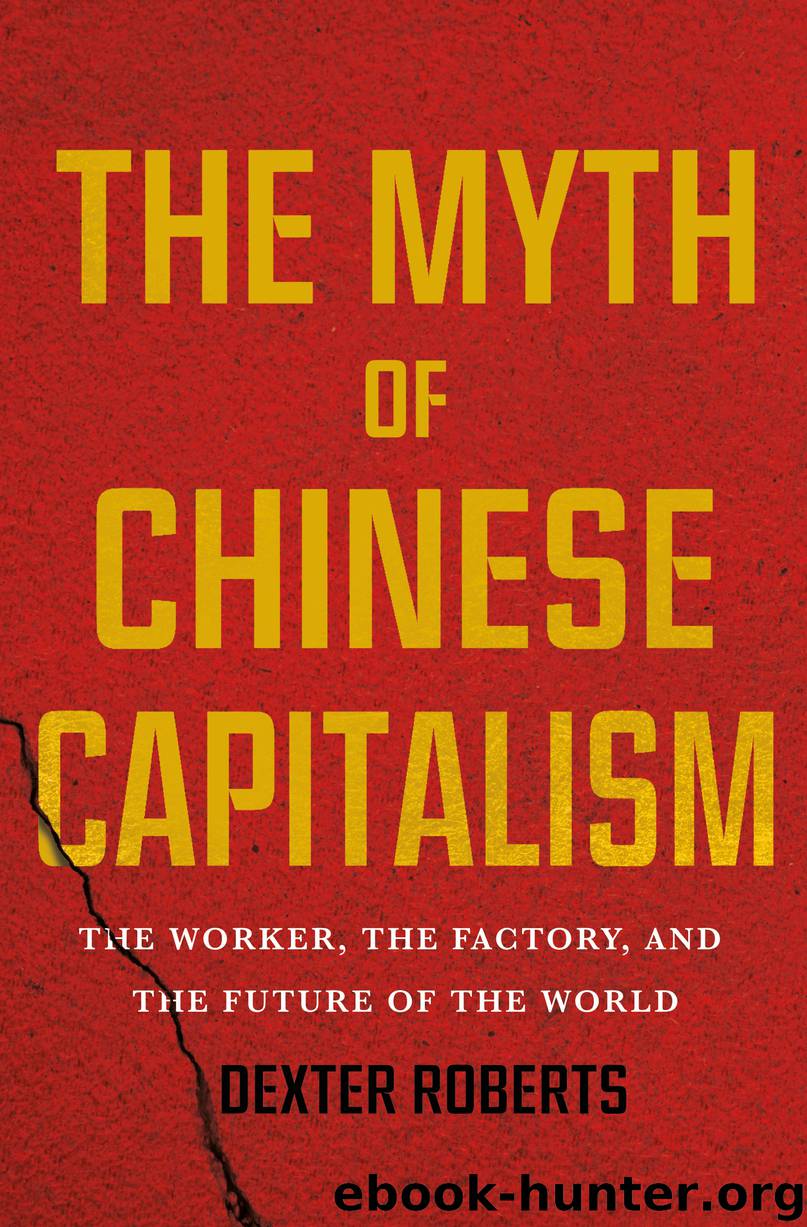The Myth of Chinese Capitalism by Dexter Roberts

Author:Dexter Roberts
Language: eng
Format: epub, azw3
Publisher: St. Martin's Publishing Group
While factory managers started adding robots and subtracting workers, policymakers in Beijing were watching what was happening in the country’s manufacturing heartland, with growing concern. Even as shortages became more prevalent, so did demonstrations, with the massive protests in the Yue Yuen’s Gaobu shoe factories happening at the same time I had visited Foxconn in Shenzhen. China’s cadres knew that the economic success of the last few decades had been built on producing cheap goods that global consumers were eager to buy. China’s then huge and growing labor force had provided what economists call a “demographic dividend,” contributing about 0.9 percent to annual economic growth, according to World Bank estimates. Now that dividend was gone and China faced the formidable challenge of rising wages squeezing company profits and damaging economic productivity. The country had reached the Lewis turning point—named for Sir Arthur Lewis, the late Nobel laureate—which comes after a labor force begins to shrink as fewer and fewer migrants come from the countryside. Failure to overcome this latest challenge could snare China in the middle-income trap, no longer competitive in low-end industries but also unable to move to a higher-value-added economy. Liu He, a long-faced, gray-haired economist and fluent English speaker, who had earned a master’s degree in public administration at Harvard University’s Kennedy School, and whose father’s family—like Miao Wei’s—also came from Changli, was tasked with dealing with this problem. He had studied how industrial economies face challenges over time and had even written a book on the topic. And he was in a position to do something about it: Liu had recently become Xi Jinping’s perhaps most trusted economics adviser.
Liu’s favored position was no surprise for those who knew the cloistered world of Beijing party politics. Liu and Xi’s relationship extended back to their youth, when the two went to neighboring elite schools in Beijing for China’s red royalty. Now the timing was propitious. Liu was eager to play a larger role in policy making, while Xi wanted to burnish his image beyond just wielding raw political power. Xi had somewhat surprisingly seized upon what he called “supply-side structural reform” as the centerpiece of his economic contribution—but of a different variety from Republican America’s version, instead focusing on closing “zombie” companies and sending subsidies to favored industries. But with little knowledge of even basic economics, Xi needed an expert to flesh out and support his chosen theory, and Liu was more than ready to do that. Over the course of 2016, several anonymous commentaries touting Xi’s theory appeared in the party flagship People’s Daily, all apparently penned by Liu, helping the theory become a common topic of seminars and getting it positive attention in the rest of the state media.19
Looking at the experience of other countries, Liu and his fellow economists seized upon Japan as an example for the economic challenge China was now starting to confront. This was a change from earlier years, when Chinese had looked to Japan as an unqualified technological success. Now they
Download
The Myth of Chinese Capitalism by Dexter Roberts.azw3
This site does not store any files on its server. We only index and link to content provided by other sites. Please contact the content providers to delete copyright contents if any and email us, we'll remove relevant links or contents immediately.
The Secret History by Donna Tartt(16619)
The Social Justice Warrior Handbook by Lisa De Pasquale(11489)
Thirteen Reasons Why by Jay Asher(7787)
This Is How You Lose Her by Junot Diaz(5768)
Weapons of Math Destruction by Cathy O'Neil(5035)
Zero to One by Peter Thiel(4823)
The Myth of the Strong Leader by Archie Brown(4789)
Promise Me, Dad by Joe Biden(4446)
Stone's Rules by Roger Stone(4415)
Beartown by Fredrik Backman(4414)
How Democracies Die by Steven Levitsky & Daniel Ziblatt(4398)
The Fire Next Time by James Baldwin(4342)
100 Deadly Skills by Clint Emerson(4076)
A Higher Loyalty: Truth, Lies, and Leadership by James Comey(4032)
Rise and Kill First by Ronen Bergman(4012)
The David Icke Guide to the Global Conspiracy (and how to end it) by David Icke(3881)
The Farm by Tom Rob Smith(3872)
Secrecy World by Jake Bernstein(3782)
The Doomsday Machine by Daniel Ellsberg(3730)
